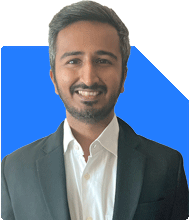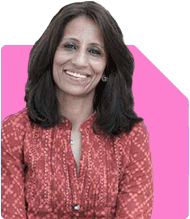Shammsunder Nikam - Need Advice on Accumulating 2 Crore Through Mutual Funds in 5 Years
Vivek Lala |323 Answers |Ask -Follow
Tax, MF Expert - Answered on Aug 11, 2024
Lala cleared his chartered accountancy exam in 2018 and completed his articleship with Chaturvedi and Shah. ... more

I'm looking to accumulate the funds of 2 crore through mutual funds in next 5 yrs. Kindly guide n suggest through investment plans.. Shammsunder nikam
If you have an active income, then your sip amount should be 2.38L to get to 2crs in 5yrs @13% xirr
If you want to invest a lumpsum amount then your investment has to be 1.08 crs to get to 2crs in 5yrs at 13% cagr
Remember that past performance is not a guarantee for future returns, and it's always important to review your investments periodically to ensure they remain aligned with your financial objectives.
Do let me know your views on this on my LinkedIn profile, attaching my profile :
https://www.linkedin.com/in/ca-vivek-lala-21a2038b?utm_source=share&utm_campaign=share_via&utm_content=profile&utm_medium=android_app
You may like to see similar questions and answers below
Ramalingam Kalirajan |10894 Answers |Ask -Follow
Mutual Funds, Financial Planning Expert - Answered on May 09, 2024
Ramalingam Kalirajan |10894 Answers |Ask -Follow
Mutual Funds, Financial Planning Expert - Answered on May 18, 2024
Ramalingam Kalirajan |10894 Answers |Ask -Follow
Mutual Funds, Financial Planning Expert - Answered on May 21, 2024
Ramalingam Kalirajan |10894 Answers |Ask -Follow
Mutual Funds, Financial Planning Expert - Answered on Jul 09, 2024
Ramalingam Kalirajan |10894 Answers |Ask -Follow
Mutual Funds, Financial Planning Expert - Answered on Dec 23, 2024
Radheshyam Zanwar |6747 Answers |Ask -Follow
MHT-CET, IIT-JEE, NEET-UG Expert - Answered on Dec 16, 2025
Shalini Singh |181 Answers |Ask -Follow
Dating Coach - Answered on Dec 16, 2025
Patrick Dsouza |1429 Answers |Ask -Follow
CAT, XAT, CMAT, CET Expert - Answered on Dec 16, 2025
Nayagam P P |10858 Answers |Ask -Follow
Career Counsellor - Answered on Dec 16, 2025
Nayagam P P |10858 Answers |Ask -Follow
Career Counsellor - Answered on Dec 16, 2025
Samraat Jadhav |2510 Answers |Ask -Follow
Stock Market Expert - Answered on Dec 16, 2025
Samraat Jadhav |2510 Answers |Ask -Follow
Stock Market Expert - Answered on Dec 16, 2025
Nayagam P P |10858 Answers |Ask -Follow
Career Counsellor - Answered on Dec 16, 2025
Nayagam P P |10858 Answers |Ask -Follow
Career Counsellor - Answered on Dec 16, 2025
Ramalingam Kalirajan |10894 Answers |Ask -Follow
Mutual Funds, Financial Planning Expert - Answered on Dec 16, 2025


























